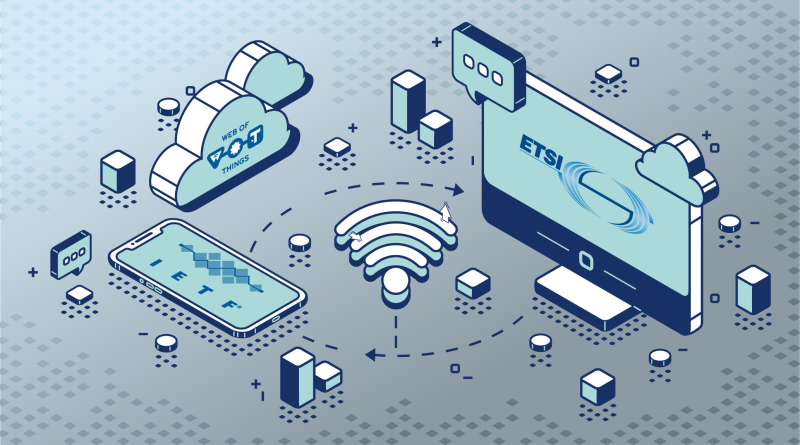The NEPHELE project’s standardization strategy is built on active engagement and contribution across key areas to ensure broad impact and alignment with industry best practices. The following summarises the work done by the project partners in respect to de facto and de jure standardisation bodies.
W3C
NEPHELE partners, notably NTUA and Siemens, work alongside the World Wide Web Consortium (W3C), actively participating in the W3C Web of Things (WoT) and Cognitive AI Working Groups. The focus is on Virtual Objects, Semantic Models, and developing cognitive agents for digital twins. Partners contribute to the development of WoT and Resource Description Framework (RDF) technologies.

Simplifying orchestration using cognitive agents at the edge is done within the W3C Cognitive AI Community Group. This features chunks & rules as a basis for describing behavior in terms of concurrent event-driven threads of behavior. Recent work has focused on agent-to-agent messaging (by agent or topic), tasks as an abstraction for rule execution, task delegation and synchronization.
The W3C RDF-star Working Group seeks to simplify annotations for RDF triples, inspired in part by growing interest in labelled property graphs (LPG) which feature properties for graph edges and vertices. The group is formalizing the next version of RDF (RDF 1.2). In essence, RDF 1.2 allows you to use a vertex to name an edge, so that the vertex can be used in triples that annotate that edge.
ETSI

ERCIM has supported the collaboration between the WoT architecture and the Next Generation Service Interfaces - Linked Data (NGSI-LD) information model. NGSI-LD provides REST based APIs for access to the (IoT) context as modeled by digital twins.
NGSI originated using labelled property graphs, but now supports JSON-LD as a serialisation of RDF. The work done in the NGSI community on modelling entities and their relationships complement the WoT community’s focus on digital twin affordances.

IETF

NEPHELE uses the CoAP protocol, which is standardized by the IETF Constrained RESTful Environments (CoRE) Working Group. CoAP is designed for constrained devices with limited resources and supports RESTful interactions over UDP with optional reliability and security modes including OSCORE (RFC 8613) for application-layer protection.
Internet-based standardized protocols from IETF are also used for IoT device security, including authentication, authorization, key establishment, and channel protection (e.g., EDHOC, OSCORE, ACE-OAuth) to ensure secure data exchange between constrained IoT devices and VO edge nodes.